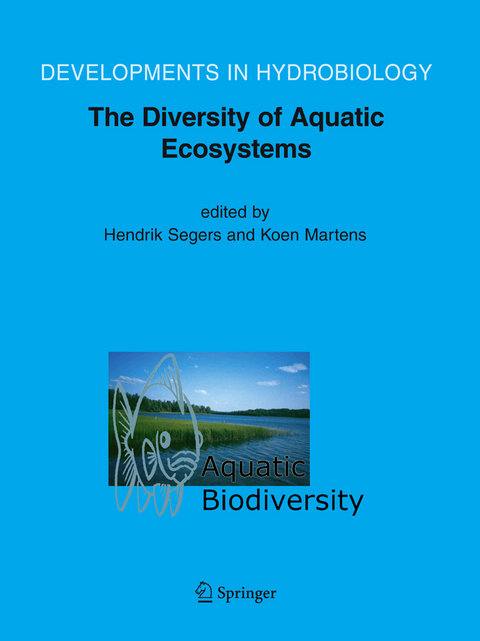
Aquatic Biodiversity II
Springer (Verlag)
978-90-481-6951-1 (ISBN)
The study of biodiversity in freshwater habitats: societal relevance and suggestions for priorities in science policy.- Biodiversity: a resource with a monetary value?.- Linking science and policy for biodiversity.- Relevance and policy dimensions of research on biodiversity in freshwater ecosystems: a developing country perspective.- Conservation of freshwater biodiversity: does the real world meet scientific dreams?.- Taxonomy and systematics in biodiversity research.- Future priorities in science policy for biodiversity studies: a comment on the target review by Luc De Meester and Steven Declerck.- Towards a coherent and high-quality science policy on biodiversity.- An assessment of animal species diversity in continental waters.- Does inland aquatic biodiversity have a future in Asian developing countries?.- Recovery in diversity of fish and invertebrate communities following remediation of a polluted stream: investigating causal relationships.- Ecological remarks on Mastigodiaptomus nesus Bowman, 1986 (Copepoda: Calanoida) in a Mexican karstic sinkhole.- Consumptive and non-consumptive effects of turbellarian (Mesostoma sp.) predation on anostracans.- Changes in functional biodiversity in an invaded freshwater ecosystem: the Moselle River.- The impact of stocking on the genetic structure of European grayling (Thymallus thymallus, Salmonidae) in two alpine rivers.- Connectivity and nestedness of the meta-community structure of moss dwelling bdelloid rotifers along a stream.- Implications of taxonomic modifications and alien species on biological water quality assessment as exemplified by the Belgian Biotic Index method.- A large-scale stream benthic diatom database.- A review on the present status and management of mangrove wetland habitat resources in Bangladesh with emphasis on mangrove fisheries and aquaculture.- Coexistence of two similar copepod species, Eudiaptomus gracilis and E. graciloides: the role of differential predator avoidance.- Native and exoticAmphipoda and other Peracarida in the River Meuse: new assemblages emerge from a fast changing fauna.- Phylogeography and speciation in the Pseudocrenilabrus philander species complex in Zambian Rivers.- Short term spatial and temporal variation of phytoplankton in a shallow tropical oligotrophic reservoir, southeast Brazil.- The female reproductive organ in podocopid ostracods is homologous to five appendages: histological evidence from Liocypris grandis (Crustacea, Ostracoda).- Daphnia species diversity in Kenya, and a key to the identification of their ephippia.- Some aspects of water filtering activity of filter-feeders.- Recent ostracods (Crustacea, Ostracoda) found in lowland springs of the provinces of Piacenza and Parma (Northern Italy).- Representation of aquatic invertebrate communities in subfossil death assemblages sampled along a salinity gradient of western Uganda crater lakes.- Life history strategies of cladocerans: comparisons of tropical and temperate taxa.- Phylogeographic history of the genus Tropheus, a lineage of rock-dwelling cichlid fishes endemic to Lake Tanganyika.- Plankton richness in a eutrophic reservoir (Barra Bonita Reservoir, SP, Brazil).- The effect of turbidity state and microhabitat on macroinvertebrate assemblages: a pilot study of six shallow lakes.
| Reihe/Serie | Developments in Hydrobiology ; 180 |
|---|---|
| Zusatzinfo | X, 390 p. |
| Verlagsort | Dordrecht |
| Sprache | englisch |
| Maße | 195 x 260 mm |
| Themenwelt | Naturwissenschaften ► Biologie ► Limnologie / Meeresbiologie |
| Naturwissenschaften ► Biologie ► Ökologie / Naturschutz | |
| Schlagworte | Aquatic Biodiversity • aquatic ecology • Limnology • Science Policy • Taxonomy and Biogeography |
| ISBN-10 | 90-481-6951-8 / 9048169518 |
| ISBN-13 | 978-90-481-6951-1 / 9789048169511 |
| Zustand | Neuware |
| Haben Sie eine Frage zum Produkt? |
aus dem Bereich


